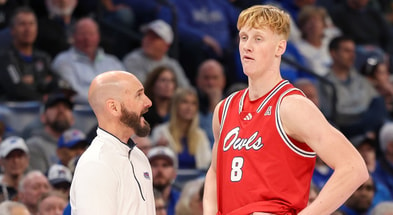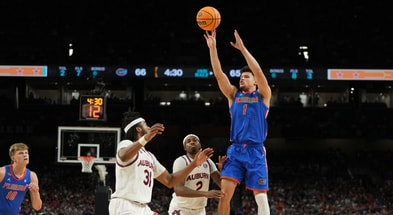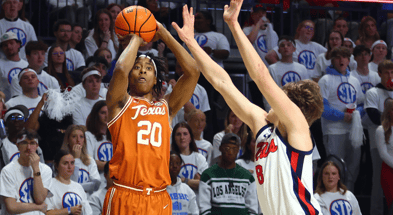Texas in contention for its best NCAA Tournament seed in 15 years

The NCAA Tournament field expanded from 53 to 64 ahead of the 1985 tournament, but the Texas men’s basketball program wouldn’t find itself as a part of the larger March Madness until 1989. That appearance began a string of 22 trips to the tourney in 24 years, including 14 straight from 1999 to 2012.
[Get Inside Texas Plus until the start of the 2023 season for $29.99!]
After the 2012-13 season broke that streak, Texas has returned to the dance six times in the last eight occasions the tournament has been held.
Where the 2022-23 team could distinguish itself from most of the previous tournament teams is in how high of a seed it obtains. Texas is in strong contention for a one-seed or two-seed, either of which would be the highest seeding for the men’s team since the 2008 tournament.
Texas has been a top-two seed three times since 1985, with all three taking place in the first 10 years of the 21st century. The 2002-03 Longhorns earned the program’s only one-seed to date on the way to its only Final Four in the expanded field era. The Longhorns earned a two-seed in 2006 and 2008 with those seasons each ending in the Elite Eight.
2006 and 2008 also ended with Big 12 regular season titles, something the current team is striving to do for just the fourth time in program history. In such a difficult conference, being the lead dog rightfully brings with it high esteem from college basketball experts and associated analytical metrics that try to project the tournament field.
BracketMatrix.com, which aggregates projections from many of the top bracketologists in the land, gives the Longhorns an average seeding of 1.88 across 86 models. Ten models give the Longhorns one-seed billing: Best Damn Bracket Period, Haslametrics, JNG Nitty Gritty Rankings, Made for March, T-Ranketology, Bracket WAG, CBB Review, M+J’s Bracket Watch, CBS Sports’ Jerry Palm, and Novice Opinion. The 76 other models call the Horns a two-seed.
Other Big 12 teams that are projected to make the field in at least 75 percent of the models include Kansas, Baylor, Kansas State, Iowa State, TCU, West Virginia, and Oklahoma State. Texas currently is 7-3 against those teams as part of its 9-3 conference record.
Those projections are valuable, but what about the rankings the NCAA itself uses to help create the field of 68? The selection committee uses something called the NCAA Evaluation Tool, or NET, as the “primary sorting tool for evaluating teams.”
Top 10
- 1Breaking
Jarin Stevenson
Alabama forward to transfer
- 2Hot
JT Toppin
$4M NIL package
- 3
Federal Bill to replace NCAA
Conference shakeup, limitless transfers
- 4
Baseball Field of 64
Projecting NCAA Baseball Tournament
- 5Trending
Mel Kiper
2-round mock draft
Get the On3 Top 10 to your inbox every morning
By clicking "Subscribe to Newsletter", I agree to On3's Privacy Notice, Terms, and use of my personal information described therein.
The February 13 edition of the NET rankings has Texas as the No. 7 team, tops in the Big 12. The Horns are behind Houston, Alabama, Tennessee, Purdue, UCLA, and St. Mary’s, but boast nine Quadrant 1 wins. That nine-win total against some of the better teams in college basketball trails only No. 8 Kansas, who has 11 Quadrant 1 wins.
The Longhorns have earned spots on advantageous seed-lines in years past. The Horns were deemed a five-seed in 1991 and 2000, a four-seed in 2007 and 2011, and a three-seed in 2021.
However, a top-two seeding is almost a prerequisite for Longhorn postseason success at the highest levels. Of the four trips to the Elite Eight since 1985, three were in the years where UT earned a top-two seed. 1990’s 10-seed team that defeated Georgia, Purdue, and Xavier on the way to the school’s first Elite Eight in the 64-team era stands as the only outlier.
Opportunities to bolster the NCAA Tournament resume of the team led by interim head coach Rodney Terry remain. Four of the final six games are against teams currently deemed to be Quadrant 1 opponents by the NET. Plus, the Big 12 regular season champion has been a one-seed in every tournament since 2017 save for when K-State and Texas Tech shared the title in 2019.
Traversing the remaining schedule and finishing on top of the Big 12, even in a shared capacity, places the Longhorns in position to be on the program’s best seed-line in almost 15 years.























